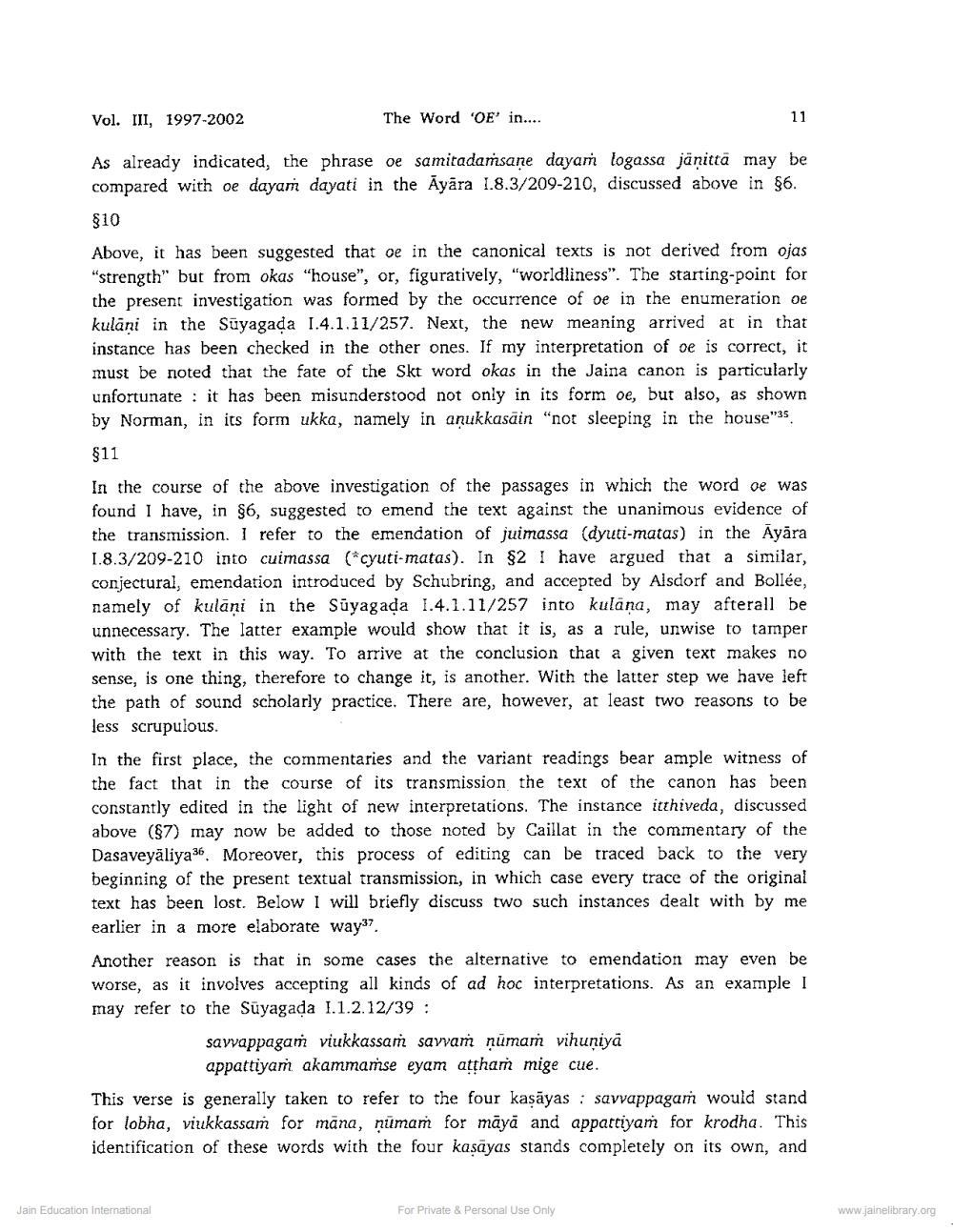Book Title: Word OE in Some Canonical Jaina Texts Author(s): Hermen Tieken Publisher: Z_Nirgrantha_1_022701.pdf and Nirgrantha_2_022702.pdf and Nirgrantha_3_022703.pdf View full book textPage 9
________________ Vol. III, 1997-2002 The Word 'OE' in.... As already indicated, the phrase oe samitadaṁsane dayam logassa jänittā may be compared with oe dayam dayati in the Āyāra 1.8.3/209-210, discussed above in $6. $10 Above, it has been suggested that oe in the canonical texts is not derived from ojas "strength" but from okas "house", or, figuratively, "worldliness". The starting point for the present investigation was formed by the occurrence of oe in the enumeration oe kulani in the Süyagada 1.4.1.11/257. Next, the new meaning arrived at in that instance has been checked in the other ones. If my interpretation of oe is correct, it must be noted that the fate of the Skt word okas in the Jaina canon is particularly unfortunate : it has been misunderstood not only in its form oe, but also, as shown by Norman, in its form ukka, namely in anukkasain “not sleeping in the house"35 $11 In the course of the above investigation of the passages in which the word oe was found I have, in $6, suggested to emend the text against the unanimous evidence of the transmission. I refer to the emendation of juimassa (dyuti-matas) in the Ayāra 1.8.3/209-210 into cuimassa (*cyuti-matas). In $2 I have argued that a similar, conjectural, emendation introduced by Schubring, and accepted by Alsdorf and Bollée, namely of kulāni in the Süyagada 1.4.1.11/257 into kulana, may afterall be unnecessary. The latter example would show that it is, as a rule, unwise to tamper with the text in this way. To arrive at the conclusion that a given text makes no sense, is one thing, therefore to change it, is another. With the latter step we have left the path of sound scholarly practice. There are, however, at least two reasons to be less scrupulous. In the first place, the commentaries and the variant readings bear ample witness of the fact that in the course of its transmission the text of the canon has been constantly edited in the light of new interpretations. The instance itthiveda, discussed above (87) may now be added to those noted by Caillat in the commentary of the Dasaveyaliya36. Moreover, this process of editing can be traced back to the very beginning of the present textual transmission, in which case every trace of the original text has been lost. Below I will briefly discuss two such instances dealt with by me earlier in a more elaborate way37 Another reason is that in some cases the alternative to emendation may even be worse, as it involves accepting all kinds of ad hoc interpretations. As an example I may refer to the Suyagada 1.1.2.12/39 : savvappagam viukkassam savvam nūmam vihuniya appattiyam akammaṁse eyam atthañ mige cue. This verse is generally taken to refer to the four kasāyas : savvappagam would stand for lobha, viukkassam for māna, nümam for māyā and appartiyam for krodha. This identification of these words with the four kasayas stands completely on its own, and Jain Education International For Private & Personal Use Only www.jainelibrary.orgPage Navigation
1 ... 7 8 9 10 11 12 13 14 15 16
